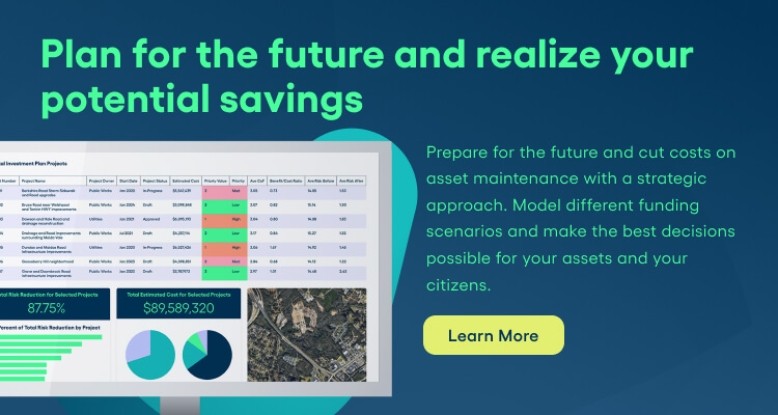3 Types of Contracts in Facilities and Project Management
Learn about the most common types of contracts from Dan Lowry
Written by Dan Lowry
EDITOR’S NOTE: This article originally appeared on LearningFM’s blog.
I’ve been asked to list and differentiate the various types of contracts that you might use in facilities and project management.
I’m going to break these down into three major types of contracts: Fixed Price, Cost-Reimbursable, and Time &Materials
Learn how operations management software can keep your facility safe and running efficiently year-round.
With that said, let’s get to it…
Fixed-Price Contracts
These have a clear statement of work, and the buyer accepts a seller’s price for it. In this type of contract, the seller bears the risk. An example of this is a purchase order- Which will establish the price, quantity, and date for the deliverable.
There are three main types of fixed-price contracts:
- Firm fixed-price
- Fixed-price incentive fee
- Fixed-price with economic price adjustment
Firm-Fixed-Price (FFP)
The most common fixed-price contract. A price is set from the outset and will not change unless there is a change in scope.
Fixed-Price Incentive Fee (FPIF)
This is a contract where buyer and seller share some risk and can both benefit from the seller out-performing agreed-upon metrics. In this type of contract, a ceiling price is established (the maximum amount the buyer will pay). Then both parties agree upon a target cost (FP) and the target fee (IF). Both added together become the target price. Finally, each agrees to a share ratio of cost overruns or underruns. The share ratio then is used to calculate the point of total assumption (PTA), where the buyer stops contributing to cost overruns and all additional costs incurred come from the seller’s profit.
I know that’s confusing, so let’s consider this example.
Let’s assume I want to purchase a custom piece of equipment that a contractor will make. We agree that I will pay no more than $125,000 for this piece of equipment and that it should cost the contractor $100,000 to make. We agree that if he can make the equipment for that, he deserves a $10,000 incentive fee, which means I would pay the price of $110,000. It looks like this:
Target Cost – $100,000
Target Profit – $10,000
Target Price – $110,000 (target cost + target profit)
Ceiling Price – $125,000
Next, assume we agree to an 80/20 share ratio. That means that if the contractor is able to make the equipment for less than $100,000, his profit goes up by $.20 for every dollar he saves. Alternatively, any costs beyond $110,000 will be paid 80% by me and 20% by the contractor, which eats into his profit. It looks like this:
Share Ratio – 80% buyer, 20% seller
At some point, because I’m not paying any more than $125,000 total, the share ratio goes to 100% contractor and 0% me. This is the PTA and is calculated like this:
PTA – ((ceiling price – target price)/buyer’s share ratio) + target cost
PTA = (($125,000- $110,000) / 0.8) + $100,000
PTA = $18,750 + $100,000
PTA = $118,750
Therefore, once costs go above $118,750, the contractor incurs 100% of them. The contractor can still make a profit (up until the cost reaches $125,000), but each additional cost eats into it.
Fixed-Price with Economic Price Adjustment (FP-EPA)
This is the third type of fixed-price contract and is used for contracts that span multiple years.

Cost-Reimbursable Contracts
These contacts first reimburse the seller for all actual costs incurred and then add a fee for the seller’s profit. In this type of contract, the majority of the risk falls on the buyer and is less desirable because of it. These types of contracts are more appropriate if there is not a clear statement of work at the beginning of the project during the negotiation process or when there are risks present too high for the seller to accept at a fixed price.
There are several types of cost-reimbursable contracts:
- Cost Plus Percentage of Cost (CPPC) – In this type of contract, the seller bears zero risk and the buyer accepts it all. This is the least desirable cost-reimbursement contract for the buyer since all costs incurred by the seller are reimbursed plus a percentage of them. An unethical seller might be tempted to not control costs, as they should, since their profit increases as the cost increases.
- Cost Plus Fixed Fee (CPFF) – Here, the buyer still bears all risk, but the seller’s profit does not increase as costs increase. The profit is set at the beginning of the project (typically a percentage of the estimated costs) and does not change unless the scope changes, regardless of the seller’s performance.
- Cost Plus Award Fee (CPAF) – This contract shares the risk a little more with the seller. In the CPAF contract, the buyer reimburses the seller for the actual costs and then awards a fee based on the buyer’s satisfaction of performance standards outlined in the contract.
- Cost Plus Incentive Fee (CPIF) – This contract shares the most risk between buyer and seller of the cost-reimbursable contracts. In the CPIF contract, the buyer reimburses the seller for actual costs and then pays an incentive fee that is predetermined and outlined in the contract based upon the seller achieving certain objectives.
Learn how to pick a contractor, what to look for on the invoice and more in this podcast episode on Cracking the Contractor Code
Time & Materials Contracts
T&M (time and materials) contracts are a hybrid of both fixed price and cost-reimbursable and are used when a clear statement of work cannot be generated. An example of this is using set professional hourly rates (for instance attorney fees) when the scope (number of hours the buyer will need) is unclear. It is always a good idea to establish a ceiling or a not-to-exceed (NTE) price in this type of contract to avoid massive cost overruns.
In Summary
Other types of contracts do exist, and it will benefit you to become familiar with your particular organization’s contracting procedures and options available to you. For instance, in a previous FM position, we had an IDIQ (indefinite delivery/indefinite quantity) contract with a number of A-Es. This type of contract is a parent contract that comes up for renewal upon expiration at set intervals (i.e., annually or biannually). Underneath the contract, we would issue task orders to engage in A-E services for the design of certain projects. This method allowed the organization to get routine services ordered in a much quicker manner than going through an entire contracting process each time we needed this service. Issuing a task order was much faster because all of the governing terms and conditions were set in the IDIQ. All that had to be specified was the scope of the individual task order.
Learn more about contracting and using software to organize your facility management needs by requesting a demo.

ABOUT DAN LOWRY
Dan Lowry is a published author and the Director of Facilities at Southern Hills Country Club. In addition to his civilian work, Dan has served in the Oklahoma Army National Guard as a Major for over fifteen years, utilizing his facilities and operations expertise as an engineer. With an MBA in finance, he’s a certified Project Management Professional® through the Project Management Institute® and maintains his credentials as a Facility Management Professional through the IFMA. Dan currently shares his insights on both his LearningFM site as well as his podcast. You can reach out to him by emailing dan@learningfm.com.




